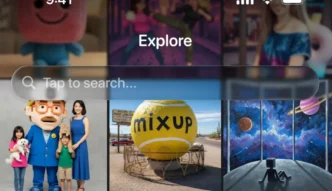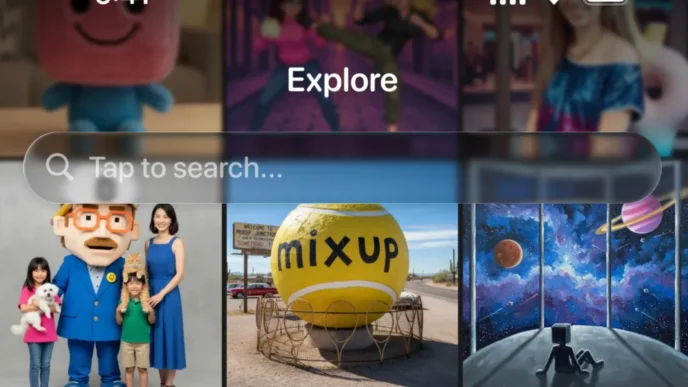Spotify new features are giving listeners a fresh way to explore the people and stories behind the music they love. The company has started rolling out an update that brings creators, collaborators, and musical influences to the center of the listening experience. And this time, the details go far beyond the basic credits most people already know.
Spotify wants listeners to see the full picture behind every track. That includes producers, background vocalists, engineers, songwriters, and other contributors who rarely get the spotlight. With these updates, the app is turning credits into something you can explore, not just skim.
One of the biggest additions is a new interactive experience called SongDNA. This is where listeners can dive into how different songs are connected. Each track now reveals what inspired it, which older songs it sampled, who covered it, and how the collaborators are linked to other projects across the music world.
SongDNA began appearing in early development months ago, after hints were spotted in the app’s internal code. Now it is official. When a listener opens a track, they will see a map of relationships that shows how the song sits inside a much bigger creative ecosystem. And for fans who enjoy discovering new music through creators rather than genres, this opens a new path.
Before now, Spotify only included basic credits. You could see the main performer, producer, and songwriter. But most albums involve dozens of people. Many of them shape the sound as much as the artist at the microphone. The expanded credits make room for all these voices and make the listening experience richer.
A key part of this new system is information from WhoSampled, a community-powered database known for tracking samples, remixes, covers, and musical influences. Spotify recently acquired WhoSampled, and the integration means listeners can explore a track’s deeper history. If a song uses a classic soul sample or a popular drum break, SongDNA will show exactly where it came from and how it has been used in the past.
TIDAL introduced something similar in the past. It allowed users to explore extended credits and creative roles behind the music. But Spotify is pushing this further by adding discovery layers that feel more visual and more connected. Instead of reading a static list, users move through a set of interactive displays that make a track feel alive.
Another part of Spotify new features is called About the Song. These are swipeable cards that appear in the Now Playing view. Each card offers context that helps the listener understand the music more deeply. The cards share the inspiration behind the song, the story that shaped it, the cultural moments attached to it, and how it fits into a wider creative journey.
These stories are pulled from reliable third-party sources. Some cards may link to Wikipedia. Others may point to news sites or music history resources. Spotify used to offer something similar through a partnership with Genius, which highlighted the background of certain tracks. But that feature was limited by what Genius had in its archive. Spotify is now opening the door to a much broader range of sources.
The new features aim to make music feel more personal. Instead of listening to a track and moving on, Spotify wants listeners to spend time with the story behind it. The experience feels closer to sitting with a friend who knows every detail about the artist and the album.
Listeners will start seeing the expanded Song Credits immediately. Mobile users will get the update first. Desktop users will receive it over the next few months. SongDNA and About the Song will be limited to Premium users when they officially launch early next year.
Before that full release happens, the features will appear in Spotify for Artists Preview. This preview period lets artists, engineers, and collaborators review the information and confirm that everything is correct. Music credits involve many contributors and often hold career importance, so accuracy matters. Spotify wants the people behind the music to verify their roles before the features reach the public.
The timing of these updates reflects a shift in how people listen to music. Fans are no longer satisfied with the surface. They want to know the origins of a sound. They want to explore creative influencers. They want to find the real humans who helped shape the tracks that show up in their playlists. And they want to move seamlessly from one creator to the next without losing a sense of story.
Spotify new features are built around this behavior. When someone discovers a powerful harmony, they may now tap into the background vocalist’s past work. When they find a beat they love, they can trace the sample back to the original track. When they notice a familiar style in the production, they can jump into the producer’s catalog. Every piece of the song becomes a discovery route.
This also benefits underrepresented creators. Background vocalists, instrumentalists, mix engineers, and other contributors rarely receive visibility in streaming apps. The expanded credit system puts their names in front of millions of listeners. When fans discover the right detail, it can spark new recognition and new opportunities for contributors who often work behind the scenes.
This shift also aligns with the way fans share music online. People are increasingly curious about the behind-the-scenes aspects of the music industry. They follow producers, track down samples, and compare different versions of the same song. The new features give listeners tools that match how they naturally explore music today.
For Spotify, this is part of a broader push to deepen engagement. When listeners spend more time exploring, they also spend more time inside the app. That leads to stronger loyalty, richer discovery, and a more immersive experience that keeps people returning.
These updates may also spark creative education. Artists can use the features to highlight their influences. Producers can showcase their signature sounds. Students studying music can trace the evolution of genres through sampling and cover version histories. The platform becomes a learning environment as much as a streaming service.
As the updates roll out, the listening experience on Spotify will feel more connected and more intentional. Songs will no longer stand alone. They will exist inside a living network of creative relationships. And fans who want to understand the full story behind their favorite tracks will have new ways to explore that world.
Spotify new features mark a shift from passive listening to active discovery. They give every track a richer identity, every creator more visibility, and every listener a closer connection to the music they enjoy. With SongDNA, About the Song, and expanded credits, Spotify is building an experience where every song comes with a story waiting to be explored.












